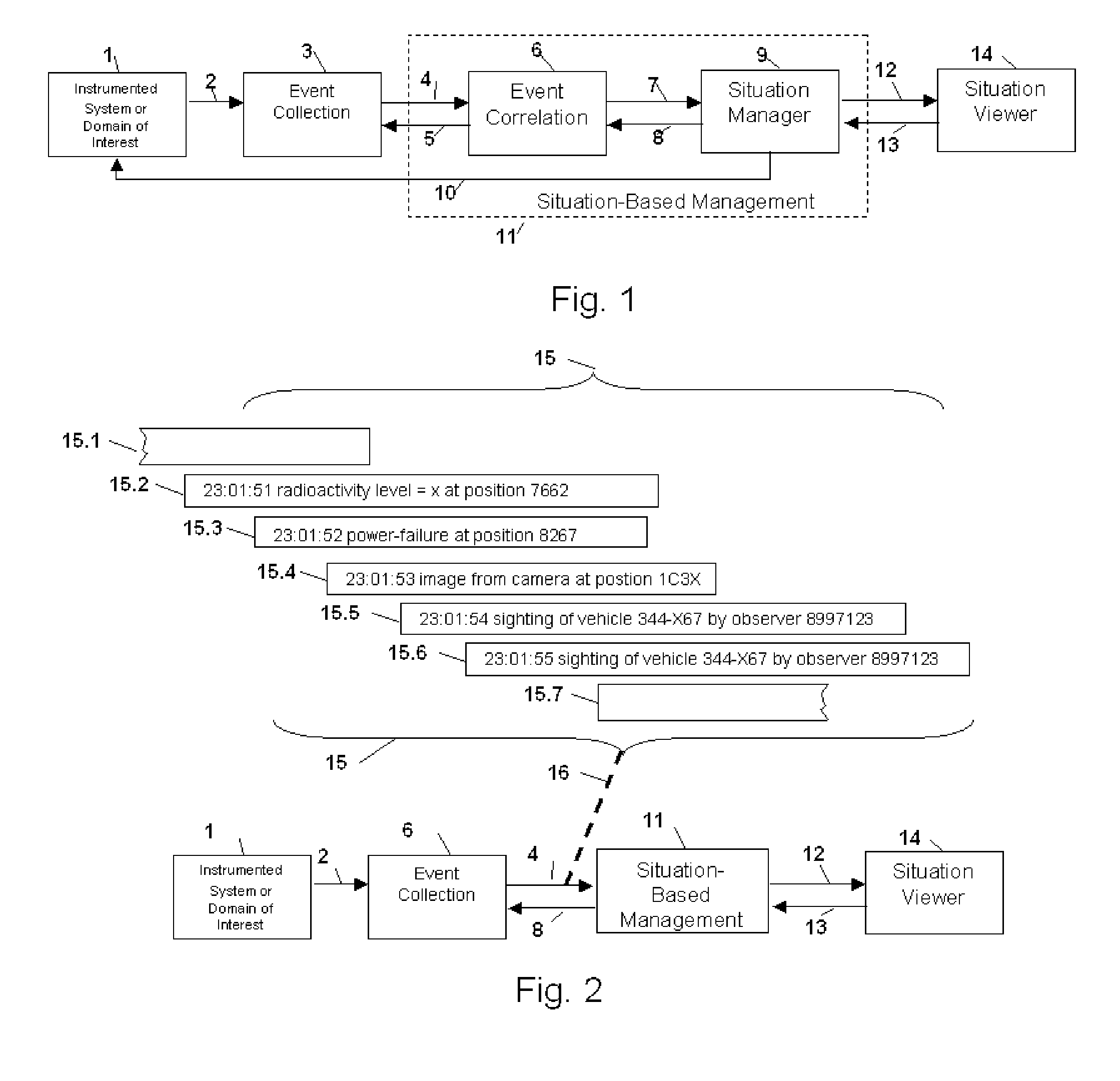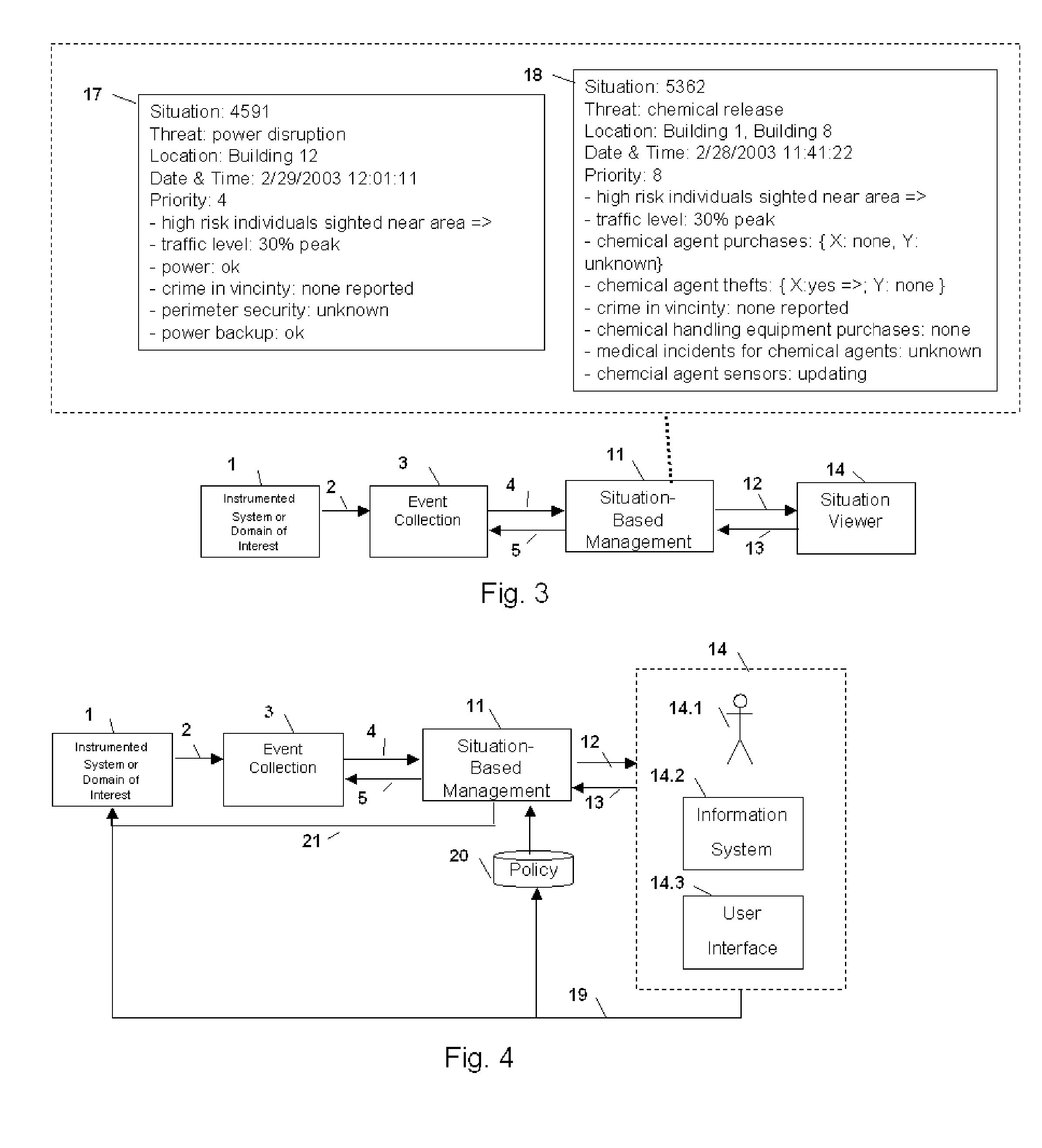Method and Apparatus for Creating and Using Situation Transition Graphs in Situation-Based Management
a situation transition and graph technology, applied in the field of situation transition graphs, can solve the problems of network performance degradation, existing fund management systems cannot automatically relate fund situations, existing fault management systems cannot readily relate network fault situations, etc., and achieve the effect of reducing redundant information and efficient transmission
- Summary
- Abstract
- Description
- Claims
- Application Information
AI Technical Summary
Benefits of technology
Problems solved by technology
Method used
Image
Examples
Embodiment Construction
[0162] I. Situation-Based Management
[0163] In one embodiment, situation-based management (SBM) refers to a process of: [0164] identifying a domain; [0165] identifying the classes of typical situations and their properties that are needed to manage the domain; the classes of typical situations include start situations, transit situations, goal situations, preferred situations, safe situations, threat situations, fault situations, terminal situations; [0166] identifying the criteria for evaluating situations and prioritizing situations; [0167] instrumenting the domain with sensors, measurement agents, and event collection apparatus which provide events to an event correlation engine; [0168] producing situation reports based on the situations, situation transitions, and events from the domain; and [0169] (optionally) taking action in the domain based on the evaluation of the situations.
[0170] A domain is any recognizable area of human activity which can be described as a set of domai...
PUM
 Login to View More
Login to View More Abstract
Description
Claims
Application Information
 Login to View More
Login to View More - R&D
- Intellectual Property
- Life Sciences
- Materials
- Tech Scout
- Unparalleled Data Quality
- Higher Quality Content
- 60% Fewer Hallucinations
Browse by: Latest US Patents, China's latest patents, Technical Efficacy Thesaurus, Application Domain, Technology Topic, Popular Technical Reports.
© 2025 PatSnap. All rights reserved.Legal|Privacy policy|Modern Slavery Act Transparency Statement|Sitemap|About US| Contact US: help@patsnap.com



